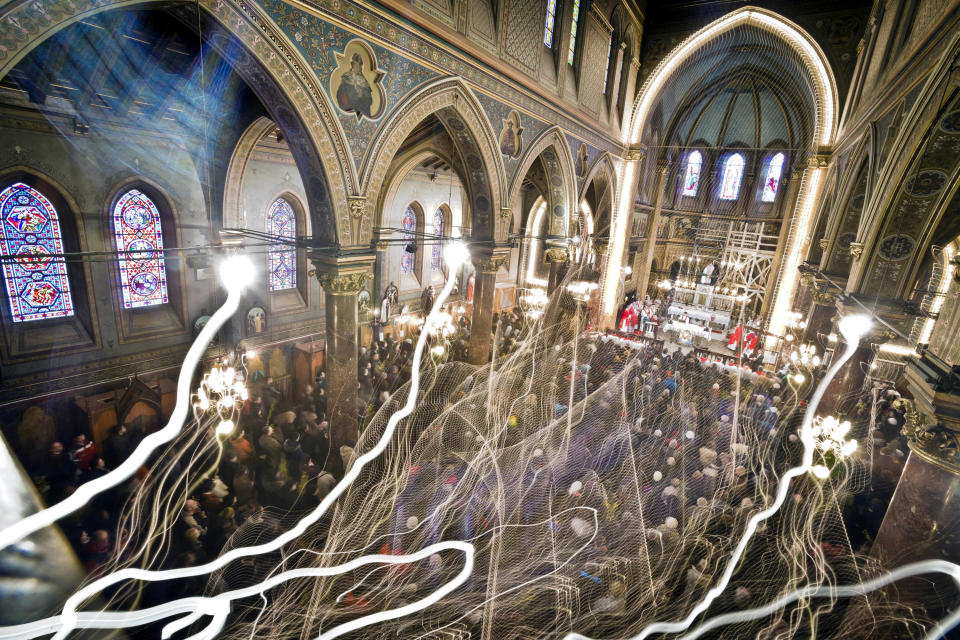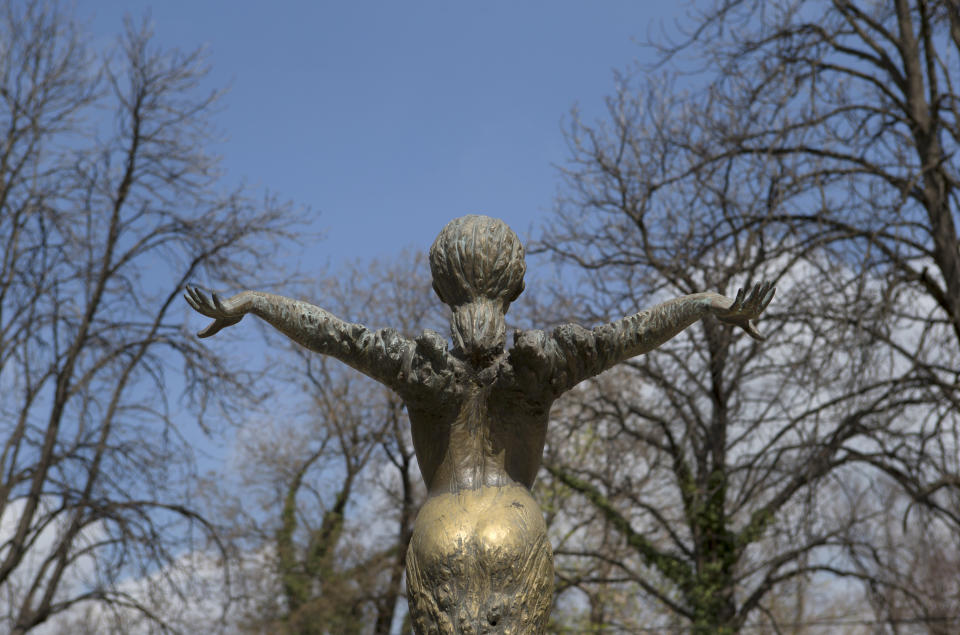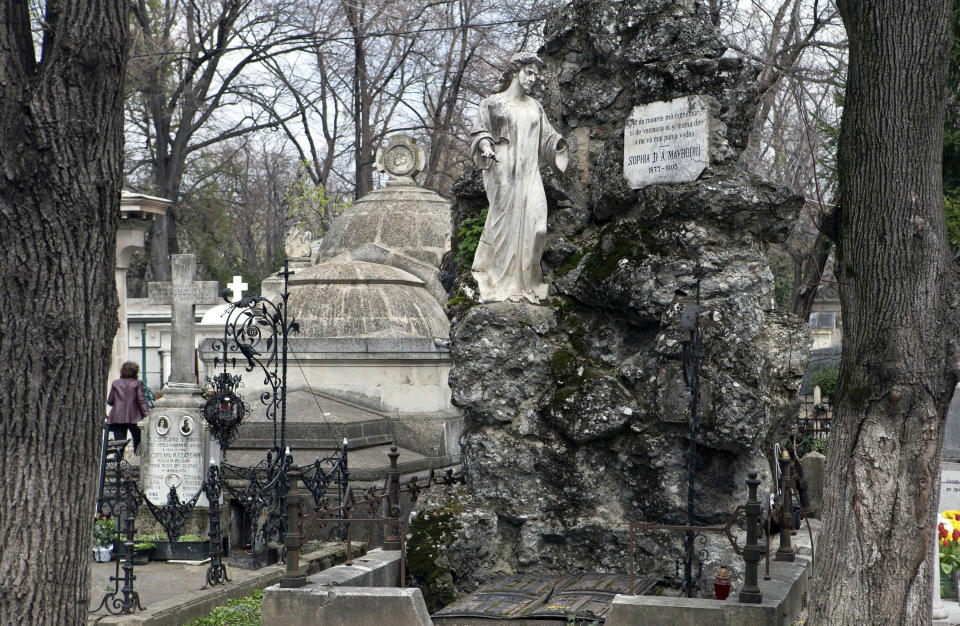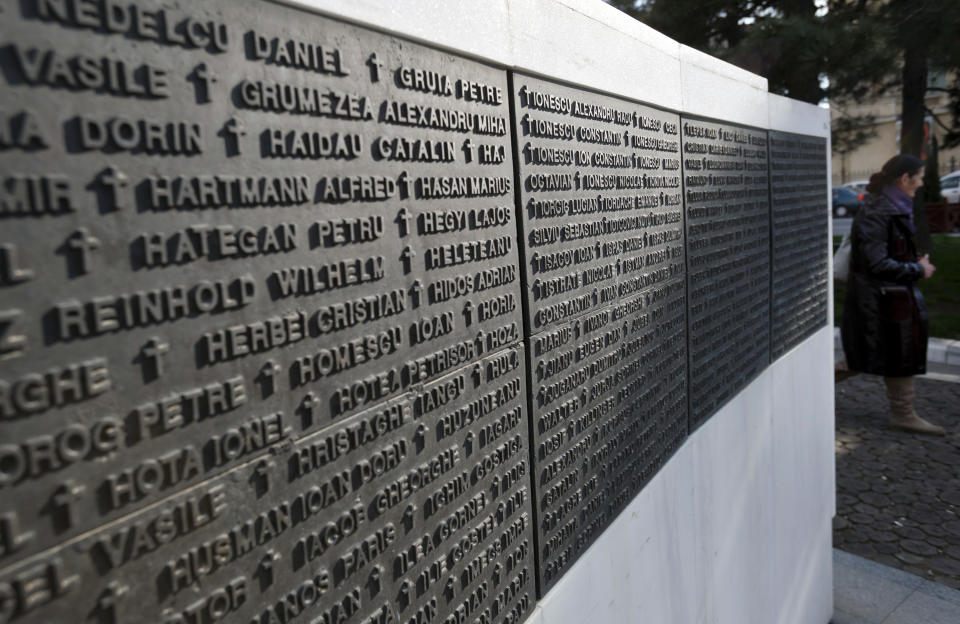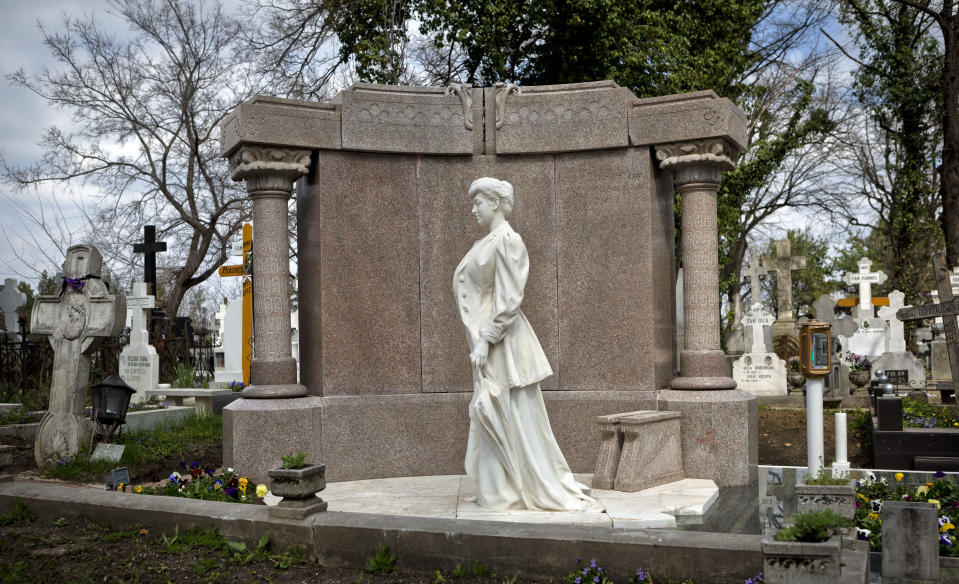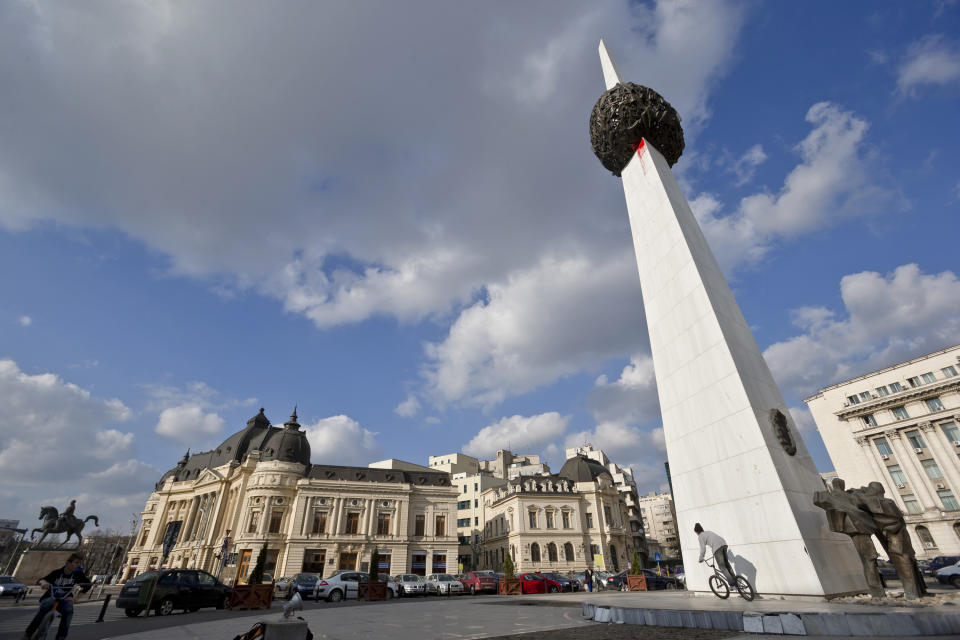5 free things in Romania's capital, Bucharest
BUCHAREST, Romania (AP) — It was founded by a shepherd, according to local legend, and was later nicknamed the Paris of the East. But Bucharest's idyllic roots and elegant reputation eventually gave way to a series of 20th century calamities: war, invasions, earthquakes and communism.
Today the Romanian capital is home to 2 million people, with a cityscape that ranges from rundown grandeur to communist monstrosities and sleek modernism. Old villas, some dilapidated, from the pre-communist aristocracy, sit next to multi-rise office blocks and modern new villas — many of which are empty due to recent economic troubles. But while Bucharest is messy, overcrowded and shabby in parts, it also hums with a cozy, vibrant and seductive Byzantine charm. Here are some places, all of them free, that help tell the city's stories.
REVOLUTION SQUARE
If you want the drama of history, there is no better place to start than Revolution Square, where the final showdown between the communist dictator Nicolae Ceausescu and the people took place. Ceausescu gave his last speech here in the final hours of his 25-year rule and was booed and jeered for the first time. Afraid of the angry crowds and his own army, which had begun to desert him, he fled the square from the roof of a Communist Party building by helicopter, the last time he ever saw Bucharest. On Christmas Day, 1989, he and his wife Elena were summarily executed in the nearby city of Targoviste after a 55-minute trial. Revolution Square saw some of the fiercest fighting as Ceausescu loyalists fired on unarmed demonstrators, and the building that housed the dreaded Securitate Communist secret police has been preserved.
Prior to World War II, Romania was a monarchy. The royal palace (now the national art museum), where officials announced that Romania had switched sides from the Nazis to the Allies in 1944, is also in the square, as is the Athenee Palace, a legendary hotel that inspired a book about spies, diplomats, journalists during World War II, and the Cina restaurant, a top place for the latest gossip during World War II. For more cultural pursuits, there is the Atheneum, a neoclassical concert hall built in the late 19th century with a grand columned entryway and domed roof, considered one of the city's most beautiful buildings.
BELLU CEMETERY
Bellu is the city's grandest and probably most overcrowded cemetery in a country where funerals and burials can be elaborate and very public affairs. The cemetery is also considered one of Europe's most valuable, because its immense collection of sculptures constitutes a vast outdoor museum. Every Romanian academic, writer, scientist and musician of note is buried here. The cemetery is just south of the Heroes' Cemetery, the final resting place for the 564 people who died in the 1989 revolution. Also buried here are national poet Mihai Eminescu, national playwright Ion Luca Caragiale, and the inventor and airplane builder Aurel Vlaicu.
CISMIGIU GARDENS
Bucharesters traditionally seek refuge in the city's parks during the scorching summer months. Cismigiu is one of the city's oldest gardens and a traditional meeting place for students, lovers and chess players. It boasts an artificial lake, a skating rink in winter, winding paths, a panoply of trees and shrubs and a memorial commemorating French soldiers killed in the city during World War I. It also appears in short stories written by Caragiale.
CHURCHES
Bucharest enjoys a rich multi-faith tradition, revived since 1989, with synagogues, mosques, and Romanian Orthodox churches in every neighborhood. There are also other Christian churches such as the Armenian Church, the Lutheran Church and the red-bricked Anglican Church of the Resurrection, which turns 100 this year. Especially worth visiting are the Roman Catholic St. Joseph's Cathedral, possibly the city's grandest church, the 18th-century Stavropoleos Monastery, which has the largest collection of Byzantine music books in Romania, and the Russian Church, with seven gold domes, funded by Russia's last czar, Emperor Nicholas II.
THE OLD CITY
Once a rundown area, the old city or Centru Vechi, which is basically all that remains of pre-WWII Bucharest, has in recent years become a vibrant quarter for entertainment and tourists, boasting antique shops, theaters, boutique hotels, restaurants, and bars, some of which stay open around the clock in the summer. You can see the neoclassical National Bank of Romania, Hanul lui Manuc, built in 1808, which is both a hotel and traditional Romanian restaurant, and the Caru cu Bere, surely Bucharest's most famous and popular restaurant, with a spectacular interior that's virtually identical to when it was built in 1875.
A final note: Getting around Bucharest is not free, but it's cheap. One good thing Ceausescu did was build the subway, which transports passengers cheaply and efficiently around the capital. Taxis are plentiful and cheap, starting at 1.39 lei (40 cents ) a kilometer (0.6 miles).
